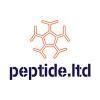- Full blown cold adaptation
- CryoHelmet
I bet BPC, is mainly hacking his wife's sleep as well as his own :-)
Haha, fortunately our daughter sleeps through the night, so we're blessed/lucky in that sense. I am doing some sleep hacking though!
glad to hear about the daughter :-). My son still doesn't sleep through the night, but it's not much of a hassle for us with all our biohacking.
On your cold adaptation. I am doing the Wim Hof Method thing and so far so good. It's actually quite fun. Not at the part of the icebaths yet (10 minute cold showers is where I am at).
Can you tell a bit more about the cryohelmet?
the latest fad in sf is apparently http://www.cryohealthcare.com/. Got this through a Tim Ferris podcast.
Haha, you guys have been doing quite a lot of hacking. Still doing the intranasal LLLT and PQQ and all that? How old is your son now if you don't mind me asking?
This was the cryohelmet I was speaking about: http://iceyourhead.com/cryohelmet/I know of 3 people on facebook now that are using it (four if including one guy's wife) and all have spoken highly of it. The literature is there to support its use, as well. I'm going to get that, the Cool Fat Burner, and the Cool Gut Buster soon. Thinking about using a snorkel or something and dunking my entire head in ice water as well for the mammalian dive reflex, but holding my breath as opposed to 'hacking' it with a snorkel may provide better effects.
I'll post an interesting review of 'hydrotherapy' later, which really I just used for nice citations on ice water immersion + CO2 (kinda like combining the diametrically opposed Jack Kruse and Dr. Peat, lol).
























































